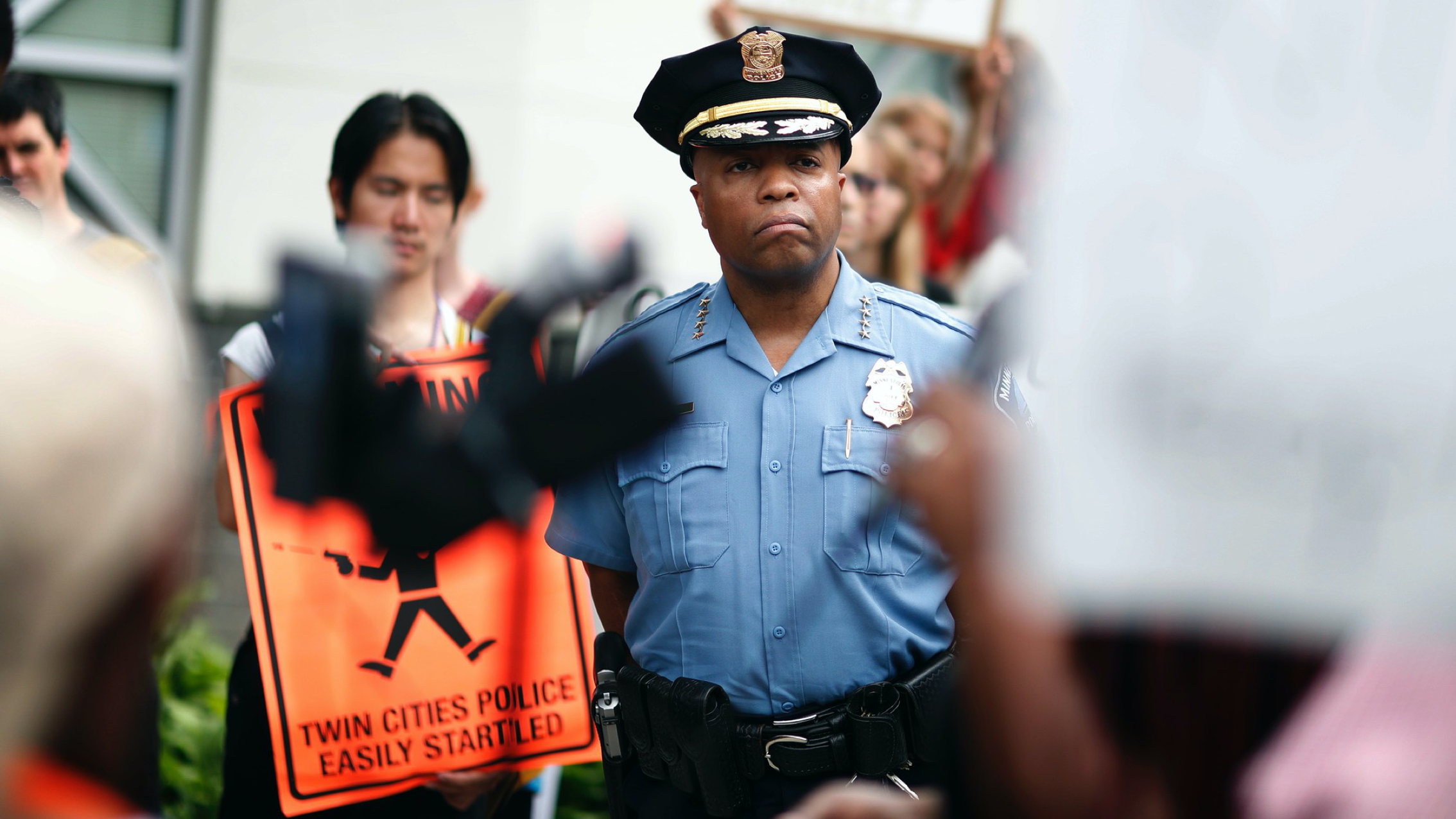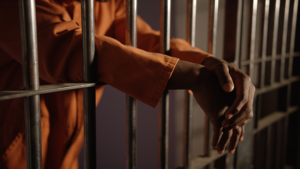After the horrifying death of George Floyd at the hands of Minneapolis police, protests against police brutality have spread across the globe.
Minneapolis has become the unexpected epicenter of a global movement committed to fundamentally changing policing tactics: Several voices on the City Council are calling for a “dismantling,” along with protesters calling for a “defunding,” of the city’s police force.
This week, the department’s chief offered his own case for reform through technological methods. It heavily relies on data and automation.
WHAT DOES DATA AND AUTOMATION DO FOR POLICE?
At first glance, police departments might bristle at data and automation. Police argue, as one chief does in a blog post at the National Police Foundation, that “all policing is done through relationships,” with an emphasis on the person-to-person connections. Critics of the police, like the Legal Aid Society’s Cop Accountability Project, could argue that police departments prefer anonymity and seek to shed on light on a department’s actions themselves.
While data has certainly become a part of modern policing, it’s mainly been to catch suspects. In a press conference, Minneapolis Police Chief Medaria Arradondo told reporters that “for the first time in history of policing, we here at MPD will have an opportunity to use real-time data and automation to intervene with officers who are engaged in problematic behavior.”
Arradondo wants to “use research on police behavior to connect officer performance data so department leaders can identify early warning signs of misconduct and provide proven strategies to intervene.” While Arradondo declined to mention Derek Chauvin, the officer who killed George Floyd, these warning signs seemed to reference his record. Before killing George Floyd, Chauvin had 18 prior complaints on file.
WHO WILL HANDLE THIS DATA?
The Police Department has signed an agreement with Benchmark Analytics, a company founded in 2017 focused on analytics and policing. Inverse has reached out to Benchmark regarding the nature of the agreement.
The Chicago-based company has ties to the politics of Minneapolis—it notes on its Twitter account that former mayor R.T Ryback is a founding board member.
WHAT PROBLEM WILL BENCHMARK ANALYTICS ATTEMPT TO SOLVE?
During his press conference, Arradondo focused on the company’s ability to stop potential bad actors before they advance too far in a police department.
“For decades the traditional model has been, a supervisor is the one who tries to stay on top of a problematic employee or look at areas of concern in terms of performance,” he said. “But we know that employees can change assignments during their careers, we know that supervisors can change assignments during careers and if we do not have a very systematic and robust way through data of tracking that, no matter where the trajectory of that employee goes or that supervisor, we’re going to have problems and we’re not going to see it.”
WHAT IS BENCHMARK’S SOLUTION?
In an accompanying press statement, Benchmark stated that it will be using its First Sign Early Intervention program. The program “designed to flag intervention early on so leadership can take preventative and corrective action before the behavior becomes a real problem.”
The company says that its system is “based on years of longitudinal studies and analyses of officer conduct in police departments across the U.S. The University of Chicago and its Center for Data Science and Public Policy…developed a series of predictive models and algorithms that identify patterns of police officer conduct that lead to problematic behavior in policing.”
Arradondo was enthusiastic about this prospect in the press conference. “We as an organization need to evolve and use technology to our advantage, and it doesn’t have wait every 30 days, or every year, for an employee review. We are able to do this now with real-time data so I’m very excited about that,” he said.
WHEN WILL BENCHMARK’S SYSTEM BE PUT INTO PLACE?
It’s unclear. Both Arradondo and Benchmark seem enthusiastic about the partnership, with the company noting in its press statement that “we have entered a new era of police reform.” The exact starting date of this new era is left unsaid.
CAN TECHNOLOGY TURN AROUND A POLICE DEPARTMENT?
The President’s Commission on Law Enforcement and Administration of Justice in 1967, when Lyndon Johnson was president, recommended that police departments rapidly adopt new technologies. That report noted that “the greatest potential for immediate improvement by technological innovation appeared to be in police operations,” and over the last fifty-three years, policing technologies have mainly been focused in this area. Think fingerprinting, DNA testing, infrared scanners, predictive policing, military-grade technology like LRAD sound cannons.
Technology has revolutionized policing, but there are serious questions about if it has actually kept communities safer. The ACLU says that “many communities of color and of low income have been turned into virtual prisons where residents’ public behavior is monitored and scrutinized 24 hours a day.”
HOW HAS ALL THIS TECH WORKED IN THE PAST?
There are strong reasons to be skeptical that a tech solution can solve problems resulting form decades of policing culture.
Body cameras, for example, were touted as a great panacea that could heal trust between police officers and community members. In 2015, then Attorney General Loretta Lynch said that body cameras could “enhance transparency, accountability and credibility.”
However, a 2019 study from George Mason showed that the cameras did not appear to do anything of the sort, saying that they “have not had statistically significant or consistent effects on most measures of officer and citizen behavior or citizens’ views of police.” The only group who truly benefited from the cameras were the police themselves, with 93 percent of prosecutors’ offices using their footage to prosecute civilians.
The same goes for forensic evidence, like DNA, which was once seen as the gold standard of evidence. Now, that gold standard is being criticized for a lack of transparency that has led to several false accusations. In one 2016 case involving the Minneapolis Police Department, for example, Hennepin County Attorney Mike Freeman called DNA evidence “truth serum,” a claim roundly rebutted by experts.
Technologies ranging from facial recognition to drones have been brought into policing in recent years. Yet for minority communities, the result has remained the same: a vast racial disparity in terms of arrests. It’s a little hard to believe that one new algorithm could change that.
COULD THESE ANALYTICS HAVE PREVENTED GEORGE FLOYD’S DEATH?
There are obvious questions about this method as it related to Floyd’s specific case. It seems designed to target officers like Chauvin, with a long history of complaints. Tou Thao, another officer present, had six complaints.
But there were two other officers on the scene, J. Alexander Kueng and Thomas K. Lane, who were both in their first week as an officer. While neither Kueng or Lane were directly involved with Floyd’s killing, they were mostly passive as Chauvin dug his knee into Floyd’s neck, with Lane occasionally suggesting that Chauvin stop.
Would a system like Benchmark’s, designed to target early missteps, be able to catch an officer whose first misstep resulted in murder? It’s a huge question, and the entire country will be watching.
WHEN WILL BENCHMARK’S SYSTEM BE PUT INTO PLACE?
It’s unclear. Both Arradondo and Benchmark seem enthusiastic about the partnership, with the company noting in its press statement that “we have entered a new era of police reform.” The exact starting date of this new era is left unsaid.
CAN TECHNOLOGY TURN AROUND A POLICE DEPARTMENT?
The President’s Commission on Law Enforcement and Administration of Justice in 1967, when Lyndon Johnson was president, recommended that police departments rapidly adopt new technologies. That report noted that “the greatest potential for immediate improvement by technological innovation appeared to be in police operations,” and over the last fifty-three years, policing technologies have mainly been focused in this area. Think fingerprinting, DNA testing, infrared scanners, predictive policing, military-grade technology like LRAD sound cannons.
Technology has revolutionized policing, but there are serious questions about if it has actually kept communities safer. The ACLU says that “many communities of color and of low income have been turned into virtual prisons where residents’ public behavior is monitored and scrutinized 24 hours a day.”
HOW HAS ALL THIS TECH WORKED IN THE PAST?
There are strong reasons to be skeptical that a tech solution can solve problems resulting form decades of policing culture.
Body cameras, for example, were touted as a great panacea that could heal trust between police officers and community members. In 2015, then Attorney General Loretta Lynch said that body cameras could “enhance transparency, accountability and credibility.”
However, a 2019 study from George Mason showed that the cameras did not appear to do anything of the sort, saying that they “have not had statistically significant or consistent effects on most measures of officer and citizen behavior or citizens’ views of police.” The only group who truly benefited from the cameras were the police themselves, with 93 percent of prosecutors’ offices using their footage to prosecute civilians.
The same goes for forensic evidence, like DNA, which was once seen as the gold standard of evidence. Now, that gold standard is being criticized for a lack of transparency that has led to several false accusations. In one 2016 case involving the Minneapolis Police Department, for example, Hennepin County Attorney Mike Freeman called DNA evidence “truth serum,” a claim roundly rebutted by experts.
Technologies ranging from facial recognition to drones have been brought into policing in recent years. Yet for minority communities, the result has remained the same: a vast racial disparity in terms of arrests. It’s a little hard to believe that one new algorithm could change that.
COULD THESE ANALYTICS HAVE PREVENTED GEORGE FLOYD’S DEATH?
There are obvious questions about this method as it related to Floyd’s specific case. It seems designed to target officers like Chauvin, with a long history of complaints. Tou Thao, another officer present, had six complaints.
But there were two other officers on the scene, J. Alexander Kueng and Thomas K. Lane, who were both in their first week as an officer. While neither Kueng or Lane were directly involved with Floyd’s killing, they were mostly passive as Chauvin dug his knee into Floyd’s neck, with Lane occasionally suggesting that Ch auvin stop.
Would a system like Benchmark’s, designed to target early missteps, be able to catch an officer whose first misstep resulted in murder? It’s a huge question, and the entire country will be watching.




